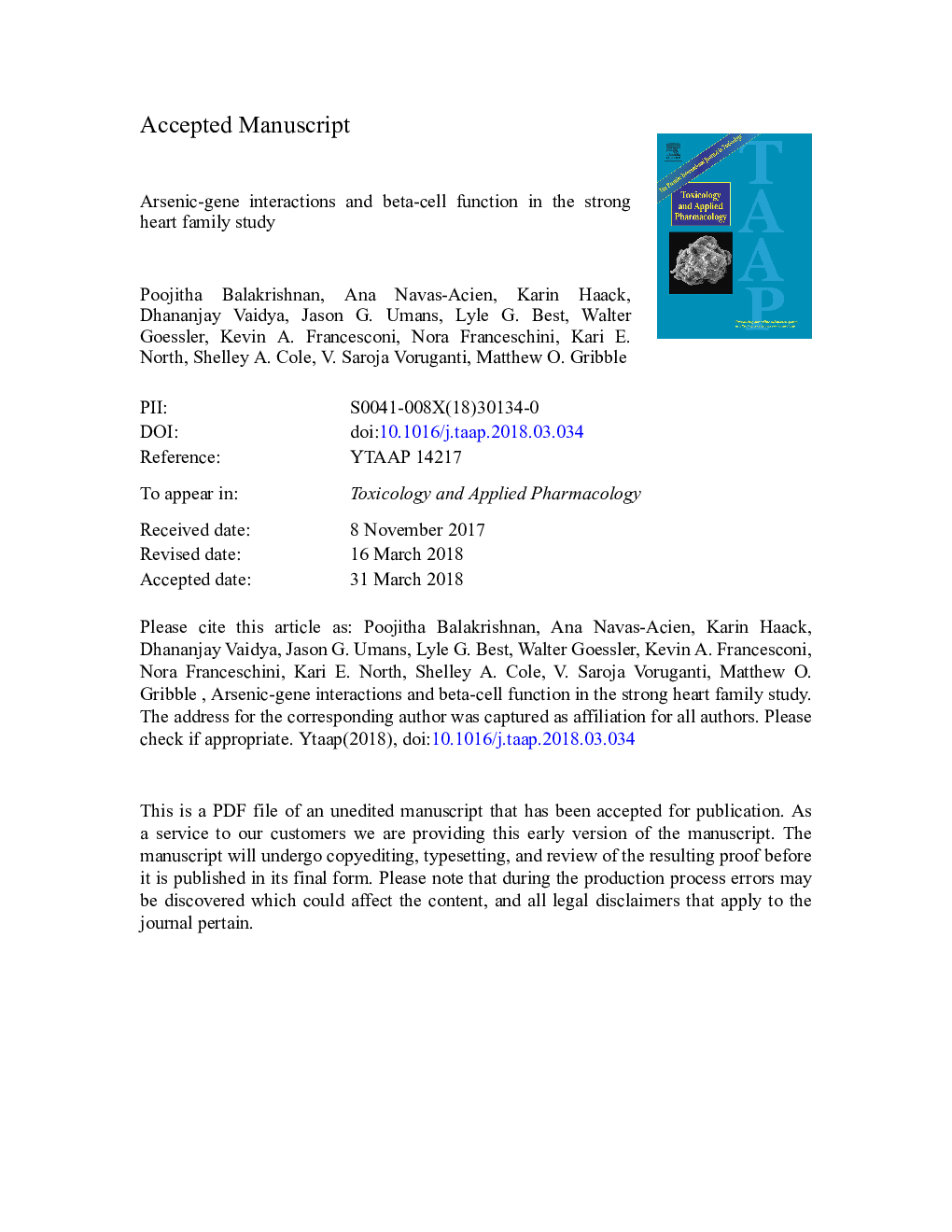| Article ID | Journal | Published Year | Pages | File Type |
|---|---|---|---|---|
| 8538537 | Toxicology and Applied Pharmacology | 2018 | 22 Pages |
Abstract
We explored arsenic-gene interactions influencing pancreatic beta-cell activity in the Strong Heart Family Study (SHFS). We considered 42 variants selected for associations with either beta-cell function (31 variants) or arsenic metabolism (11 variants) in the SHFS. Beta-cell function was calculated as homeostatic model - beta corrected for insulin resistance (cHOMA-B) by regressing homeostatic model - insulin resistance (HOMA-IR) on HOMA-B and adding mean HOMA-B. Arsenic exposure was dichotomized at the median of the sum of creatinine-corrected inorganic and organic arsenic species measured by high performance liquid chromatography-inductively coupled plasma mass spectrometry (HPLC-ICPMS). Additive GxE models for cHOMA-B were adjusted for age and ancestry, and accounted for family relationships. Models were stratified by center (Arizona, Oklahoma, North Dakota and South Dakota) and meta-analyzed. The two interactions between higher vs. lower arsenic and SNPs for cHOMA-B that were nominally significant at Pâ¯<â¯0.05 were with rs10738708 (SNP overall effect â3.91, Pâ¯=â¯0.56; interaction effect with arsenic â31.14, Pâ¯=â¯0.02) and rs4607517 (SNP overall effect +16.61, Pâ¯=â¯0.03; interaction effect with arsenic +27.02, Pâ¯=â¯0.03). The corresponding genes GCK and TUSC1 suggest oxidative stress and apoptosis as possible mechanisms for arsenic impacts on beta-cell function. No interactions were Bonferroni-significant (1.16â¯Ãâ¯10â3). Our findings are suggestive of oligogenic moderation of arsenic impacts on pancreatic β-cell endocrine function, but were not Bonferroni-significant.
Related Topics
Life Sciences
Environmental Science
Health, Toxicology and Mutagenesis
Authors
Poojitha Balakrishnan, Ana Navas-Acien, Karin Haack, Dhananjay Vaidya, Jason G. Umans, Lyle G. Best, Walter Goessler, Kevin A. Francesconi, Nora Franceschini, Kari E. North, Shelley A. Cole, V. Saroja Voruganti, Matthew O. Gribble,
